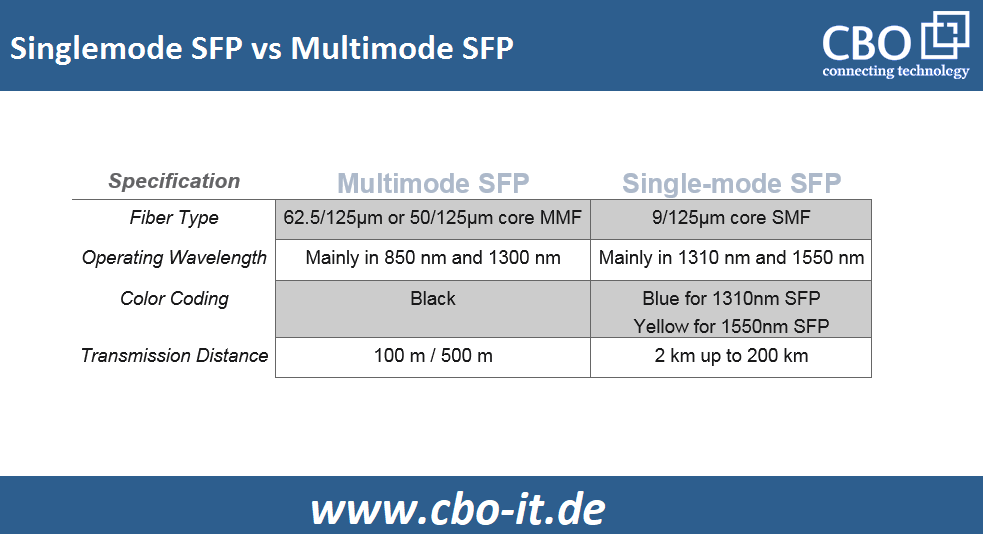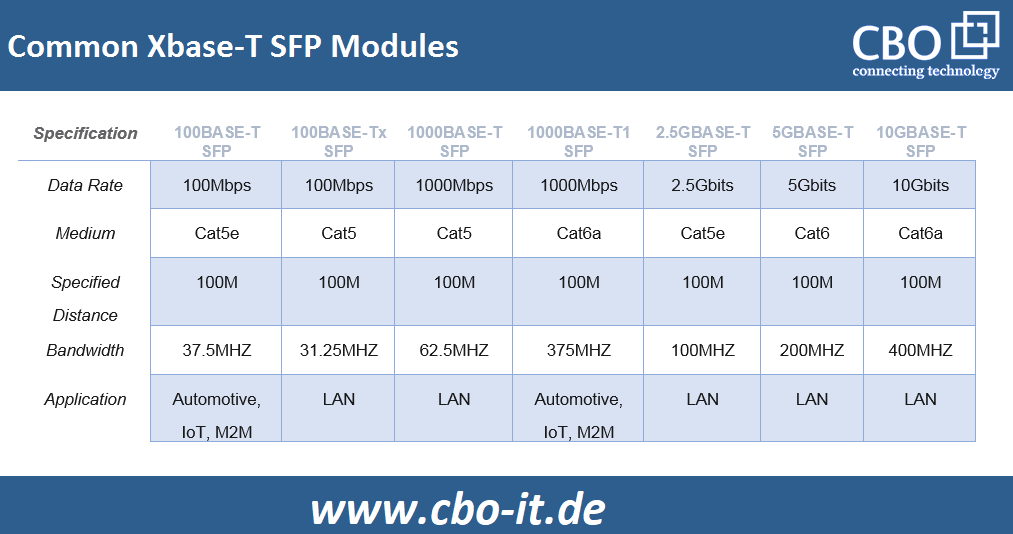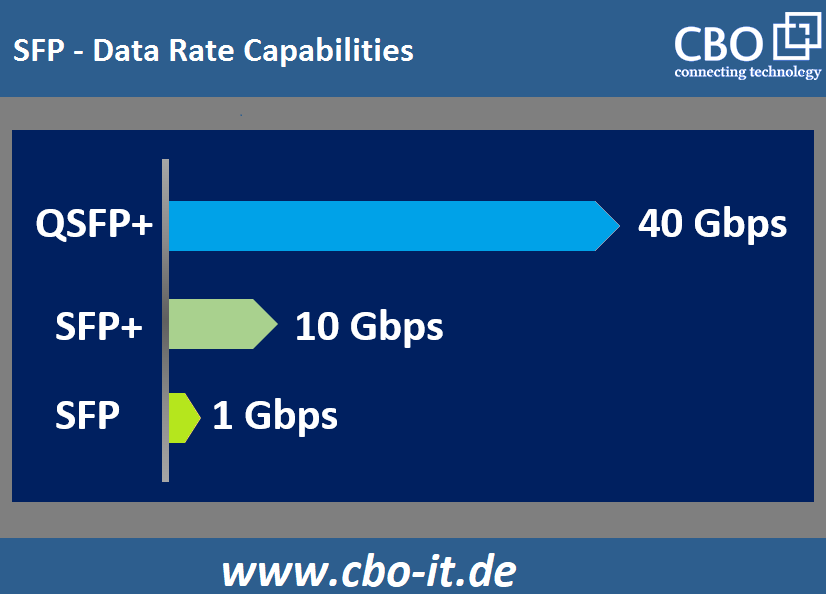There is a broad range of SFP modules available today. So, knowing the differences between different types of SFP modules and choosing the best one is an important task. SFP modules are categorized by their distance, wavelength, and bandwidth capabilities. The SFP you select must be harmonious with the optical fiber cable you plan to install. Single-mode fiber (SMF) requires a single-mode compatible, optical SFP module. At the same time, multimode fiber (MMF) requires a multimode compatible SFP module.
After reading this article, you will find an appropriate SFP transceiver according to your needs.
Cable Type
SFP module can work over copper and optical fiber. As we all know, there are two types of optical fiber cable available; Single-mode and Multimode. Thus, we have two types of SFP optical modules available. Single-mode SFP and Multimode SFP. The following exhibit shows fundamental differences between the two types as mentioned above of optical SFP modules.
(X)BASE-T is the IEEE standard that defines various data transmission modes over unshielded twisted-pair cabling. It also provides information on numerous aspects of achieving Ethernet connectivity through this cabling. In most cases, you will confront 1000Base-T compatible SFP modules for 1 Gb networks. Following exhibit contains information about most popular Ethernet SFP modules available on the market;


Transmission Distance
For Shorter Distances; Multimode SFPs are available as a cheaper solution for shorter distances. 850 nm wavelength SFP modules are the most common multimode SFP modules available for a maximum link distance of 550 meters. In scenarios where more transmission distance is required, you can opt to go with 1310 nm wavelength SFP transceivers as they offer up to 2km transmission distance.
For Long Reach; Single-mode, optical SFP modules can transmit between 10 to 200 kilometers. Following is a list of different SFP type modules along with possible link distances;
- 1310nm LX SFP (Standard) can reach up to 10 kilometers
- 1310nm EX SFP (Extended) can reach up to 40 kilometers
- 1550nm ZX SFP (Standard) can reach up to 80 kilometers
- 1550nm EX SFP (Extended) can reach up to 160 kilometers
- BiDi SFP transmission distances can vary within the range of 10 to 160 kilometers
It is important to note that the transmission range of a BiDi SFP transceiver depends upon the band of wavelength within which it operates. 1510nm/1590nm, 1310nm/1490nm, and 1310nm/1550nm are the most commonly used wavelength pairs of BiDi SFPs. Whereas the transmission distance can reach up to 200 kilometers with the help of multiplexed wavelengths.
Transmission Rate
The trend towards higher bandwidth and higher speed is unstoppable as we saw things transforming from Fast to Gigabit Ethernet and then to 10, 40, 25, and 100Gb Ethernet. Since the inception of SFP, sophisticated and advanced transceivers have been added to the product line. SFP+ is available for 10 Gigabit, SFP28 is available for 25 Gigabit Ethernet, QSFP is available for 40 Gigabit Ethernet, QSFP28 is now available for 100G Gigabit Ethernet.

Applications
SFP transceivers are used for both data communication and telecommunication applications. Its interface is compatible with many network devices, including media converters, routers, switches. SFP modules come compatible with various communication standards, including (but not limited to) Gigabit Ethernet, SDH, Fiber Channel, SONET, etc. HD video/audio reception and transmission, PON, simplex, and multiplexing are some of the most popular applications of SFP transceivers.
3G-SDI Video SFPs – are widely deployed to meet the video transmission requirements in an HD environment
PON SFPs – use different wavelengths to enable communication between the Optical Line Terminal (aka OLT) at the Central Office (or CO) and the Optical Network Units (ONUs) at the subscriber’s premises over single-mode fiber.
CWDM / DWDM SFPs – are employed by telecommunication service providers for long-distance transmission. These transceivers enable the transmission of multiple wavelengths or signals over a single fiber.
BiDi SFP – enable users to make simpler cabling systems by allowing transmission and reception of data to and from interconnected network devices such as routers or switches over a single optical fiber cable. BiDi SFP transceivers can help you in increasing network bandwidth and mitigating costs.
Fiber Channel SFP is a high-speed networking technology used for the interconnection of digital data storage devices to servers in SAN environments.
SONET/SDH SFP – is compatible with ATM and SONET/SDH standards which compliments the data rates as defined in OC-3/STM-1 to OC-48/STM-16 for long-reach (LR1/LR2), intermediate reach (IR1), Short-reach (SR), and multimode (MM) applications.
Conclusion
Optical SFP transceivers come in various types. Single-mode SFP and Multimode SFP are the two basic SFP modules available. Further categorization of these modules is done based on their characteristics and critical operating parameters such as; range, bandwidth, and transmission speed. The wide variety of available SFP transceivers enables network operators to choose a particular type according to their specific networking requirements.
 English
English
 Deutsch
Deutsch
 Espaniol
Espaniol










